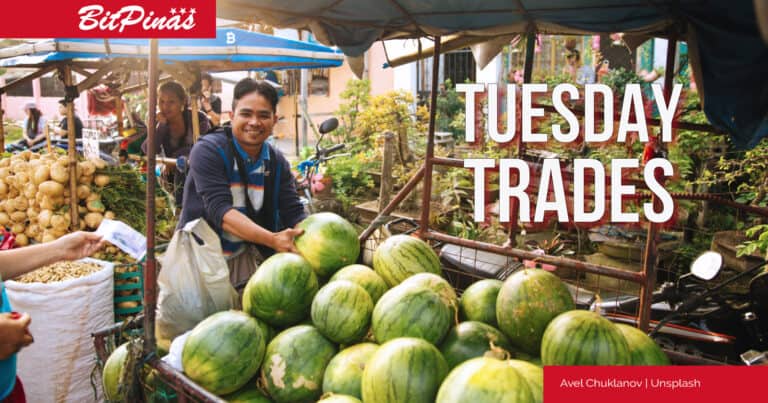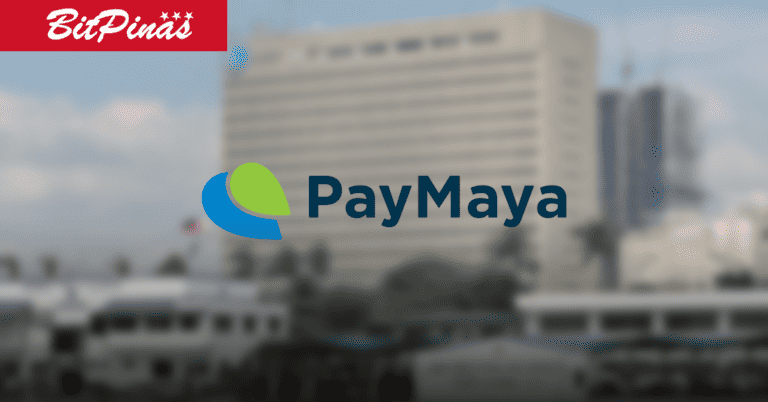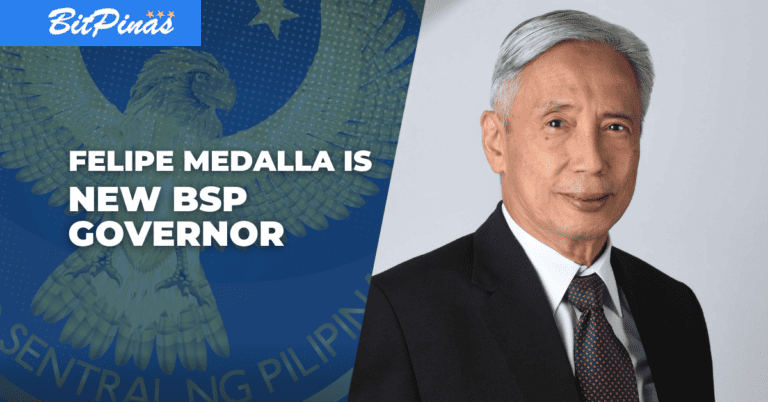Newsletter: Why Did GCash Use Binance in P2P Promo?
I feel companies with millions of users should also, first and foremost, ensure that they have the proper educational materials about crypto, before telling them they can use their app to transact via P2P.

While doing my usual Monday workflow as BitPinas editor and working on our upcoming event, I stumbled upon a Facebook post from GCash, where they showed users how to buy crypto using “Gcash P2P.” It was a video instruction showing the Binance app and how to buy crypto there, via their peer-to-peer service.
A few terminologies and entities:
P2P – peer-to-peer. For brevity’s sake, I will send you crypto from my Binance account to your Binance account. Then you will send me 1000 pesos or whatever is our agreed price, you’ll transfer it from your GCash account to my GCash account.
GCash – self explanatory.
Binance – an international crypto exchange. Binance has majority of the cryptocurrencies and has products including derivatives, saving, lending etc.
Binance, as per the BSP website last updated March 31, 2022, does not have the virtual asset service provider (VASP) license, which the central bank awards to companies and entities to legally facilitate crypto to fiat transactions and vice versa in the Philippines.
GCash’s very long crypto journey
GCash, by the way, also does not have the VASP license (also as per the BSP website last updated March 31, 2022). The company – for more than six months now – has been saying in various press appearances that they will soon offer crypto. I asked 2 crypto execs before from two different VASPs, and they confirmed GCash was talking to them, one of them even said that GCash was probably talking to everybody.
The holidays came, and PayMaya confirmed with BitPinas in December that they are entering crypto and finally acquiring a VASP license. “We were waiting for the wrong e-wallet giant all along,” wrote Luis Buenaventura, one of the leading PH crypto thought leaders, in his newsletter.
Around March, GCash issued a press release with information that everyone in crypto knew about already – that their app can be used to cash in and out of Binance, PDAX, and other local and international crypto exchanges. At that time, I didn’t get the point of that press release. The title of that PR—“GCash Now Offers Fast and Secure Ways to Buy Crypto”—led to many in #CryptoPH to think that they could finally buy crypto on GCash. It turned out we were wrong.
Then just this month, PayMaya went full steam ahead, launching their crypto offering within their app. They did it very quietly, only formally announcing it a day later.
Our story leads us back to the GCash Facebook Post.
The video showed the 5-step process of buying crypto on Binance and then using Gcash as payment method. It was very simple to follow, but I felt it was also very dangerous.
Let’s look at Step 3. “Select P2P Merchant and Input Peso Amount.”
Anyone in crypto knows before you transact with someone using P2P, you have to verify if the person is not a scammer, and that you are encouraged to check the rating of the seller. You don’t just choose the seller that’s above the other sellers like what was indicated in the GCash video.
You must also first verify that the name of the seller on Binance is also the name of the person that owns the Gcash account. Of course, none of those was mentioned in the video.
You can say that these are just details, but that’s crypto’s current reality—for all the money being put into this space, it is understandably difficult to take part without proper web3 literacy—and, if they were to participate without knowing these details, they can get rekt.*
Consider a person who has successfully funded their wallet on an international crypto exchange. This exchange might have products like derivatives, wherein if you are on the wrong side of the trade and don’t do it correctly, you could get liquidated, meaning you lose all your funds.
They could have used a licensed exchange as an example
My other issue is, why did GCash (which has 51 million users) use Binance P2P as an example to “educate users on how to buy crypto” using their app? Couldn’t GCash just use a locally licensed exchange like PDAX in their example? (I get that they can’t show PayMaya, for obvious reasons.)
Crypto right now is still very technical and simple instructions could lead to loss of money, or even life savings. There is no shortcut in crypto education.
I also think it’s better to use a locally licensed exchange in the example to showcase what GCash can do. Why? Because if the user lost their funds for reasons that may or may not be their fault, the local licensed exchange is bound to help this user. Will the international exchange prioritize helping the Filipino, when it has millions of other users that need to be addressed by their chat support? Perhaps they will, but if the user found the resolution unsatisfactory, could they sue in the local courts like if they used a locally licensed exchange?
On Legal Recourse
In an article penned by SEC Commissioner Kelvin Lee, he reiterated that while the SEC cannot compel the Filipino to use international crypto products, he emphasized that the public has very minimal recourse with local government agencies should they encounter any trouble. “The SEC is merely emphasizing that the public be careful when engaging in such activities,” he noted, and that’s true: when Cryptopia got hacked in 2019, Filipino users found themselves helpless from local authorities. Cryptopia is beyond Philippine jurisdiction. No one can help.
The New Philippine Crypto Climate
2021 has unlocked a new potential for the Philippines to become the de-facto crypto capital of the world, brought about by the popularity of Axie Infinity. MetaMask indicated their no. 1 country is the Philippines. More than half of Axie players are from the country. Binance is looking for a country director. Coinbase does, too. PDAX has a $50M war chest to increase brand awareness, and PayMaya and its 48 million users have entered the PH crypto race.
This is the current crypto climate in the Philippines, and GCash resorted to “creative moves” in the absence of the VASP license. But by encouraging users to move their funds in a non-BSP licensed international exchange, I would like to ask them, is this a responsible thing to promote by a 51-million user strong company?
I get that P2P is like moving two transactions separately (exchange to exchange and Gcash to Gcash), but without any form of crypto education on how to do it correctly (see my points on the simplistic instructions on the Gcash video) the user could face difficulties in an exchange that is outside the local financial system, without any legal recourse, without any help.
You might say I’m being hypocritical because I did write an article on how to use Binance P2P using BloomX and PDAX to cash in and out of crypto. I wrote about DeFi, about MetaMask. I wrote about Abra, which also does not have a license yet continues to operate here. When I asked them in 2018, Abra said they are “not a financial services company in the Philippines. We merely provide a software interface into other third-party services,” and that they will continue to monitor changes in PH laws to make sure they are compliant.
I am not a lawyer, I don’t know everything about the technicalities of whether this is legal or not. What I know is that, just like an influencer with a sizable following (try 1 million followers) has to be very responsible in the things they promote because their followers can get hurt by a bad product endorsement. I feel companies with millions of users should also, first and foremost, ensure that they have the proper educational materials about crypto, before telling them they can use their app to transact via P2P.
This is part of the newsletter published on BitPinas: Newsletter: Why Did GCash Use Binance in P2P Promo?




